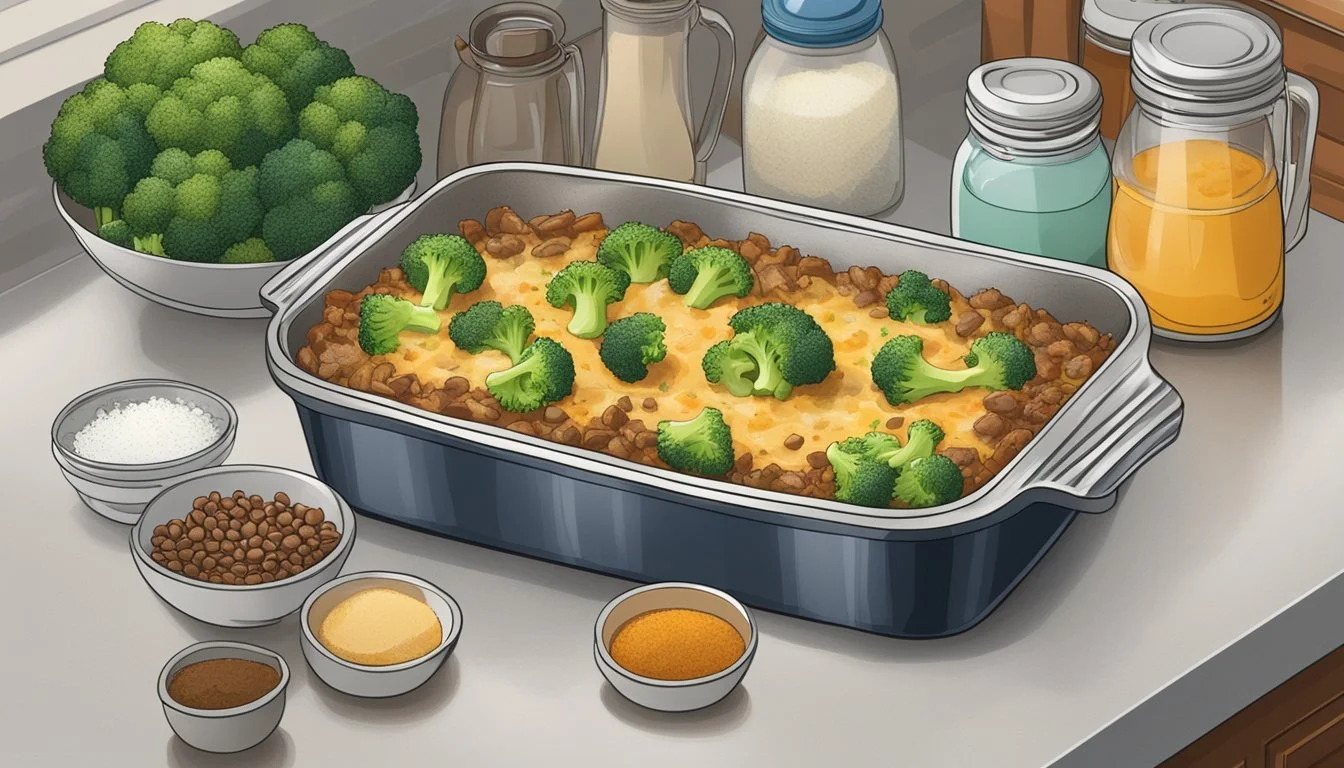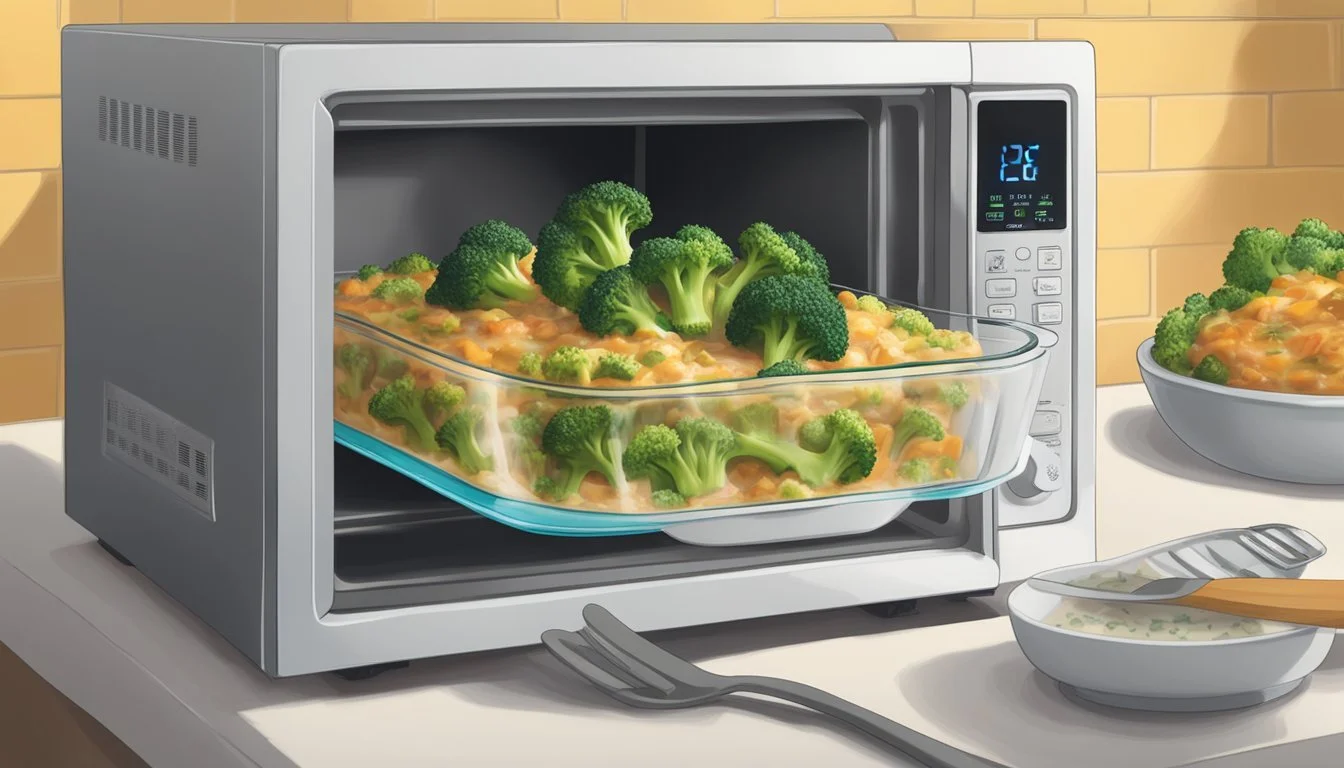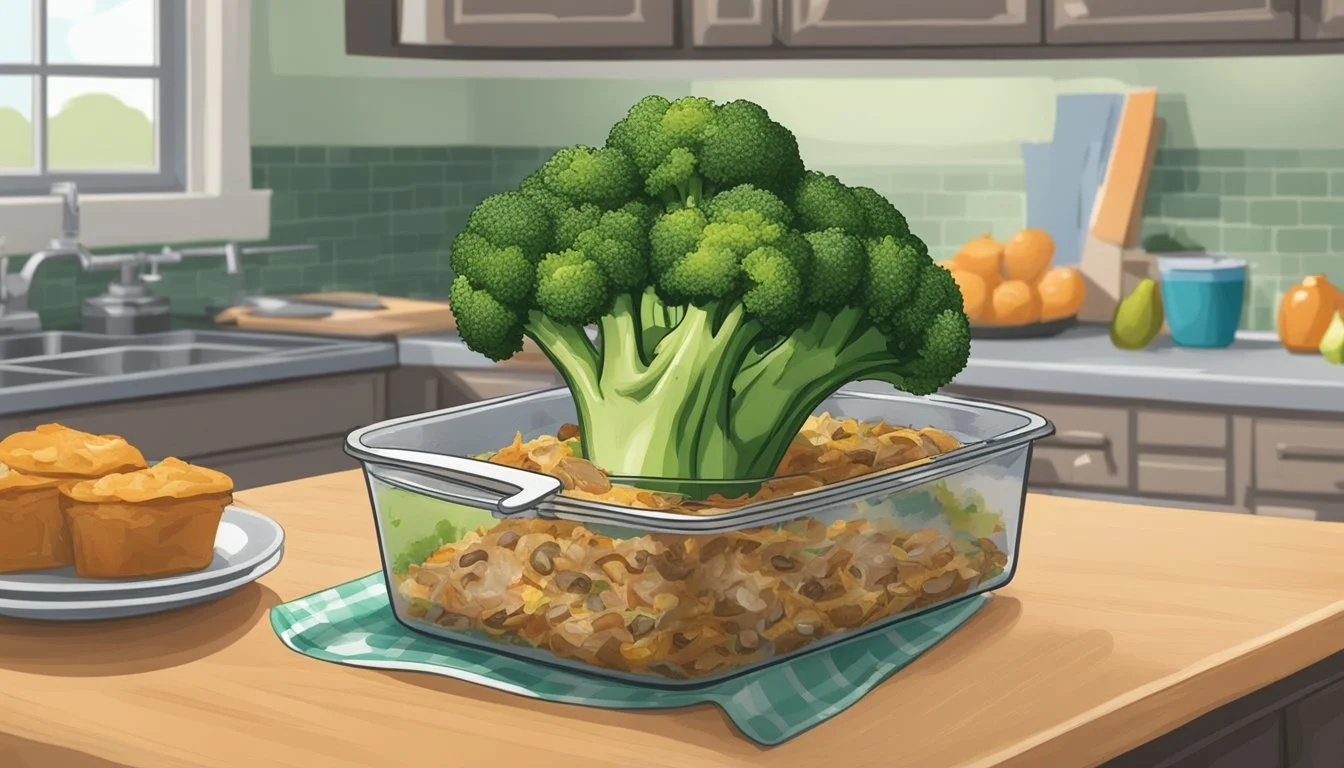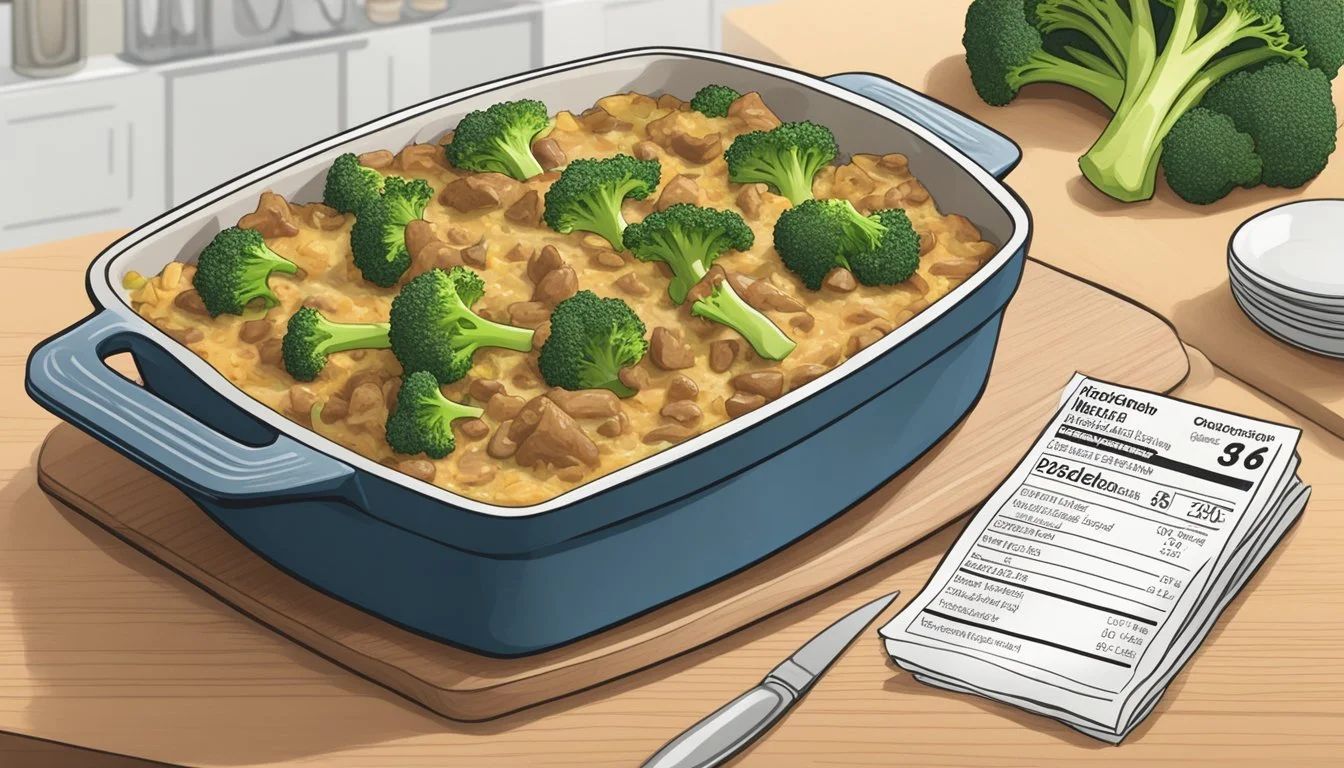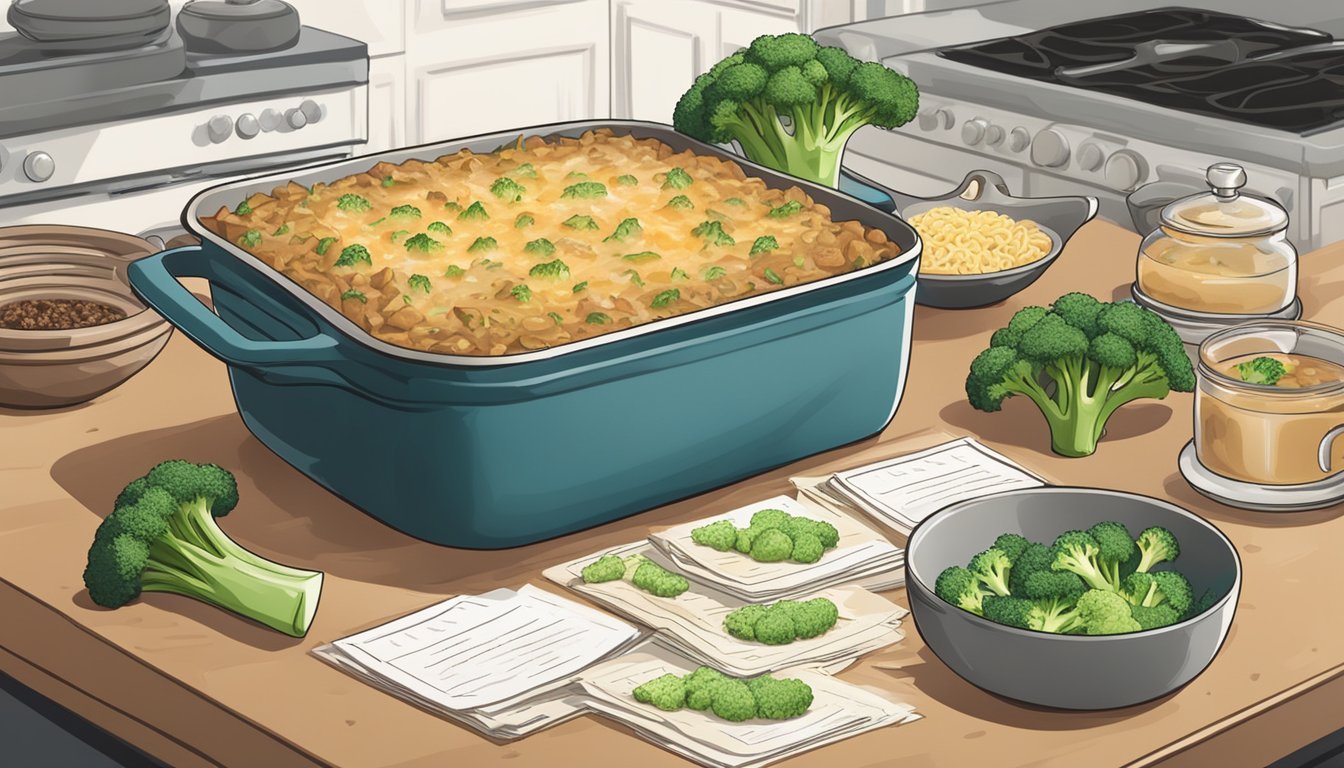How Long Does Beef and Broccoli Casserole Last?
Storage Tips for Freshness
Beef and broccoli casserole is a comforting and nutritious family-friendly dish that many enjoy. Packed with protein from the beef and vitamins from the broccoli, it's not just delicious but also beneficial for those looking to maintain a balanced diet. When stored properly in an airtight container in the fridge, beef and broccoli casserole can last up to 3-4 days.
Ensuring the casserole is stored correctly is crucial to maintain its quality and safety. If you're not able to consume it within this time frame, consider freezing it to prolong its shelf life. This dish is as practical as it is tasty, making it a perfect choice for meal prep or quick weeknight dinners.
Keeping track of how long your leftovers last helps prevent foodborne illness and ensures your family's meals are both safe and enjoyable. This guide will help you make the most of your beef and broccoli casserole, whether you plan to enjoy it the next day or save it for later in the week.
Understanding Casseroles
A casserole is a versatile dish that combines various ingredients baked together, resulting in a harmonious and flavorful meal. The core components typically include a protein, vegetables, a grain, and sometimes cheese.
Ingredients in casseroles can vary widely. Common proteins include beef, chicken, or fish. Vegetables like broccoli, carrots, and bell peppers add both flavor and nutrition.
Casseroles are known for their hearty and comforting nature. They often contain a starch, such as rice, pasta, or potatoes, which provides a substantial base.
Cheese is a frequent addition, offering a creamy texture and rich taste. This helps to bind the ingredients together and enhances the casserole's appeal.
Texture is key in a casserole. The combination of crunchy vegetables, tender meat, and possibly gooey cheese creates a satisfying eating experience.
In terms of course, casseroles can serve as a main dish, side dish, or even a breakfast item, depending on the ingredients used.
The diverse nature of casseroles makes them a popular choice for meals, capable of being tailored to individual tastes and dietary preferences.
Casseroles can be prepared ahead of time and reheated, making them convenient for busy schedules.
Understanding the basic components and variations of casseroles helps in creating dishes that are not only delicious but also nutritious and balanced.
Key Components in Beef and Broccoli Casserole
A well-crafted beef and broccoli casserole typically includes a balanced mixture of protein, vegetables, and foundational ingredients. Each component plays a crucial role in terms of nutrition, flavor, and texture.
Protein Choices
Beef is the most common protein choice for this casserole, often using ground beef due to its rich flavor and ease of preparation. Ground turkey and ground chicken offer leaner alternatives for those mindful of calories and fats. For a unique twist, pork can be substituted, though it will alter the flavor profile. Regardless of the protein chosen, these options provide essential nutrients such as protein, iron, and fat.
Vegetable Varieties
Broccoli florets dominate this dish, offering both texture and nutritional benefits like fiber, vitamins, and low carbohydrates. Cauliflower can substitute or complement broccoli, particularly for those wanting a lower-carb option. Onions and garlic are frequently included for their robust flavors and health benefits such as anti-inflammatory properties. Other additions, like green beans or green onions, can introduce varied flavors and textures.
Casserole Basics
The foundational ingredients blend everything together. White rice or brown rice is typically used, contributing carbohydrates and fiber. A mixture of water, broth, or oil like olive or coconut helps to cook and moisten the casserole. Seasonings such as salt, pepper, and Italian seasoning enhance taste. Dairy components such as mozzarella cheese often top the casserole, providing calcium and additional fats.
Cooking Instructions and Techniques
Beef and broccoli casserole combines flavorful ingredients and simple cooking techniques for a delightful dish. Following precise steps ensures the casserole is both delicious and safe to eat.
Preparing the Casserole
Begin by preheating the oven to the recommended temperature, usually around 350°F (175°C). Use a 9x13-inch baking dish, sprayed with nonstick cooking spray for easy cleanup.
In a skillet, brown the ground beef over medium heat until it is fully cooked, ensuring no pink remains to maintain food safety. Adding diced onions and garlic at this stage enhances the flavor. Drain any excess fat.
Blanch the broccoli florets in a pot of boiling water for 2-3 minutes, then transfer them to an ice bath to retain their color and texture. Combine the cooked beef and broccoli with cooked rice, shredded cheeses like cheddar or mozzarella, and cream of mushroom soup in a large mixing bowl. Season with soy sauce, paprika, and Italian seasoning.
Transfer the mixture into the baking dish. Sprinkle more cheese on top for a gooey, melty finish. Bake, uncovered, for 15-20 minutes, or until the casserole is heated through and cheese is melted and bubbly.
Culinary Enhancements
For added richness, blend in cream cheese with the beef and rice mixture. This gives the casserole a velvety texture. Incorporate finely diced red peppers or sautéed mushrooms for extra layers of flavor.
Spices and herbs can elevate the dish further. A dash of paprika or a sprinkle of freshly chopped parsley adds a nice touch. Italian seasoning infuses aromatic notes.
To save time, use a microwave for steaming broccoli if you prefer not to blanch it. If you're short on certain cheeses, mozzarella and cheddar are good substitutes due to their melting properties.
By following these steps and incorporating these enhancements, you can create a memorable beef and broccoli casserole that is sure to impress.
Optimal Storage Practices
Proper storage is essential to maximize the shelf life and ensure food safety for beef and broccoli casserole. By understanding the best ways to refrigerate and freeze this dish, one can prevent food poisoning and enjoy leftovers safely.
Refrigeration Guidelines
When storing beef and broccoli casserole in the refrigerator, it is crucial to use airtight containers to prevent the food from absorbing other odors and to keep out harmful bacteria. After cooking, allow the casserole to cool to room temperature for about 30 minutes, but do not let it sit out for more than 2 hours.
In the refrigerator, beef and broccoli casserole should be consumed within 3-4 days. This timeframe ensures that the dish remains safe to eat and retains its quality. Always keep the refrigerator set at 40°F (4°C) or lower to slow down bacterial growth.
Freezing for Longevity
If you need to store beef and broccoli casserole for an extended period, freezing is an excellent option. Properly frozen, the casserole can last up to 2-3 months without significant loss of flavor or texture. To prepare the dish for freezing, first allow it to cool completely.
Use heavy-duty freezer bags or freezer-safe containers to store the casserole. Make sure to remove as much air as possible before sealing. Label the containers with the date, so you can monitor the expiration date effectively.
When ready to eat, thaw the casserole in the refrigerator overnight and reheat thoroughly to an internal temperature of 165°F (74°C) to ensure it is safe for consumption. Avoid refreezing leftovers after they have been thawed.
Safe Reheating Procedures
Reheating a beef and broccoli casserole safely ensures both taste and food safety. There are several methods to consider, each with its own steps and precautions.
Oven Method
Preheat the oven to 350°F (175°C).
Transfer the casserole to an oven-safe dish if it isn't already in one.
Cover the dish loosely with aluminum foil to retain moisture.
Heat for 20-30 minutes or until the internal temperature reaches 165°F (74°C).
Microwave Method
Place a portion of the casserole on a microwave-safe plate.
Cover with a microwave-safe lid or microwave-safe wrap.
Heat on high for 2-3 minutes.
Stir halfway to ensure even heating.
Check the temperature with a food thermometer; it should reach 165°F (74°C).
Stovetop Method
Use a frying pan or medium saucepan.
Add a small amount of water, broth, or sauce to prevent drying.
Heat on medium, stirring frequently.
Ensure the casserole is heated evenly to 165°F (74°C).
Food Safety Tips
Allow the dish to stand covered for 2 minutes after reheating.
Return any unused portions to the refrigerator within 2 hours.
Avoid multiple reheating cycles; limit to once for the best quality and safety.
Always use a food thermometer to check the temperature.
Using these methods ensures that the beef and broccoli casserole is reheated safely, preserving both its flavor and nutritional value.
Understanding Expiration and Spoilage
The shelf life of a beef and broccoli casserole depends on how it is stored. Proper refrigeration at 40°F (4.4°C) can extend its edibility for up to 3-4 days. If freezing is preferred, the casserole can last several months, maintaining quality and preventing spoilage.
Expiration dates are crucial. They indicate the last day the food is expected to be good. Consuming the casserole past this date increases the risk of foodborne illness. Foodborne pathogens can thrive in improperly stored food, leading to food poisoning with symptoms like nausea and vomiting.
Signs of spoilage include changes in smell, color, and texture. If the casserole has a sour or off smell, discoloration, or a slimy texture, it should be discarded immediately to avoid health risks.
Proper storage practices involve using air-tight containers to prevent bacterial growth. This helps extend the casserole’s shelf life and ensures it remains safe to eat for the specified duration. Always reheating leftovers to an internal temperature of at least 165°F (74°C) also helps kill potential bacteria.
Complementary Sides and Variations
Finding the best sides and tweaks for your beef and broccoli casserole can make your meal more balanced and enjoyable. Consider nutritional elements such as fiber and grains, and explore creative casserole variations to suit different dietary needs.
Side Dish Selection
Green Salad: A green salad complements beef and broccoli casserole by adding fresh, crisp textures. Think romaine lettuce, spinach, and arugula with cherry tomatoes and cucumber for extra fiber.
Bread and Rolls: Soft dinner rolls or slices of whole-grain bread pair well. They absorb sauces and add a comforting carb element.
Grains and Vegetables: Consider serving with quinoa or brown rice. These grains are rich in fiber. A side of steamed green beans, corn, or roasted zucchini provides extra vegetables.
Fruits: A small fruit salad with apple slices, grapes, and melon brings a refreshing contrast.
Alternate Casserole Versions
Gluten-Free: Replace traditional noodles with gluten-free pasta or zucchini spirals. Use gluten-free soy sauce and flour.
Dairy-Free: If the original recipe includes dairy, substitute with almond milk, coconut milk, or dairy-free cheeses. Ensure none of the sauces have hidden dairy ingredients.
Hamburger Casserole: Create a twist by using ground beef instead of slices and adding layers of tomato sauce, green onions, and melted cheese for a richer flavor.
Fish Variations: Swap beef for salmon or tilapia. This keeps the dish hearty while offering a unique taste. Adjust cooking time to ensure the fish is fully cooked.
Adapting the casserole allows it to fit various dietary preferences and keeps the meal interesting and versatile.
Nutritional Information
Beef and broccoli casserole can be a hearty and nutritious dish. The nutritional profile can vary slightly depending on the specific ingredients used, including the type of beef, the additional vegetables, and any sauces or spices added.
Nutrition Facts (per serving)
Calories: Approximately 350-450 calories per serving.
Protein: A significant source of protein, averaging around 30 grams per serving. This comes mainly from the ground beef and any added cheese.
Fat: Total fat content ranges from 15 to 25 grams per serving. This includes both the fat from the beef and any added fats like butter or oil.
Saturated Fat: Saturated fat content can be around 8 to 12 grams, depending on the fat content of the ground beef and any dairy products included.
Carbohydrates: Usually contains 20 to 30 grams of carbohydrates. This number can vary if additional ingredients like rice or pasta are used.
Sugar: Typically low in sugar content, usually under 5 grams per serving. The sugar mainly comes from natural sources like vegetables.
Fiber: Around 3 to 5 grams of fiber per serving. Broccoli and any added vegetables contribute to the fiber content.
Using fresh ingredients and lean ground beef can help make this dish more nutritious. Adjustments like using low-fat cheese or adding more vegetables can also improve the nutritional profile.
Meal Planning and Preparation Tips
For anyone looking to streamline their evenings, beef and broccoli casserole can be a fantastic option.
Meal Prep: Preparing ingredients beforehand can save a lot of time. Chop the broccoli into bite-sized pieces and dice other vegetables, like onions or peppers, ahead of cooking. You can also brown the ground beef and store it in an airtight container in the fridge.
Easy Dinner: This dish can serve as a quick and simple dinner. Assemble the casserole in your chosen dish and refrigerate it up to 24 hours before baking. This ensures that, come dinner time, you simply need to bake and serve.
Total Time: Depending on the recipe, the total preparation and cooking time can vary. Typically, expect about 10-20 minutes of prep and around 20-30 minutes of baking.
Servings: A standard 9x13-inch casserole dish usually yields between 6 to 8 servings, making it ideal for family dinners or meal prepping for the week.
Storage: To keep the casserole fresh, store it in an airtight container in the refrigerator. Properly stored, it can last around 3-4 days.
Incorporate these tips into your meal planning to make busy weeknights more manageable and stress-free.
Culinary Culture and Trends
Beef and broccoli casserole, rooted in American comfort food cuisine, reflects a blend of nutritious ingredients and homely flavors. This dish has gained popularity not only for its taste but also for its convenience, making it a favored choice for family-friendly meals.
Social media platforms like Instagram have played a significant role in boosting the popularity of such comfort foods. Home cooks and food bloggers frequently share their own versions of beef and broccoli casserole, often highlighting the dish's adaptability and ease of preparation.
Modern culinary trends emphasize simplicity and minimalism. Beef and broccoli casserole fits well within this trend due to its straightforward recipe and wholesome ingredients. This makes it an ideal choice for busy families looking for quick, nutritious meals.
The dish's versatility also contributes to its staying power in contemporary kitchens. Variations can include different types of cheeses, seasonings, or even additional vegetables, catering to a wide range of tastes and dietary preferences.
Here’s a look at some reasons why beef and broccoli casserole remains a staple:
Convenience: Easy to prepare with common pantry ingredients.
Family-Friendly: Appeals to both children and adults.
Nutritious: Combines protein, vegetables, and grains for a balanced meal.
Overall, beef and broccoli casserole exemplifies how comfort food can adapt to modern culinary trends, maintaining its status as a beloved, easy-to-make dish.
Closing Thoughts
Proper storage is crucial to maintain the freshness and safety of beef and broccoli casserole. Store leftovers in an airtight container in the fridge.
Leftovers should be consumed within 3-4 days. If not planning to eat within this timeframe, consider freezing it.
When freezing, use a container suited for freezing to avoid freezer burn. Thaw in the fridge before reheating.
Reheating should be thorough: ensure the casserole is heated evenly to an internal temperature of 165°F (74°C). This can be done using either an oven or a microwave.
Use these tips to enjoy the deliciousness of beef and broccoli casserole safely.

